To each city, it’s preferred mode of transportation. In Jogja, it’s the Beca. (Pronounced Betcha)
These 3 wheel variants on rickshaws (thus the name TRIshaws), are ubiquitous. And, since as mentioned before, Yogyakarta residents are a creative bunch, it makes sense for their beca to be, well, artistic. So here are some of our favorite beca visuals…
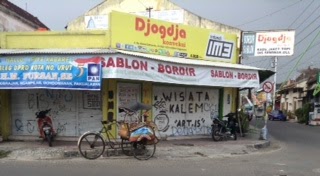 |
| A beca parked in front of a colorful street corner in Jogja. |
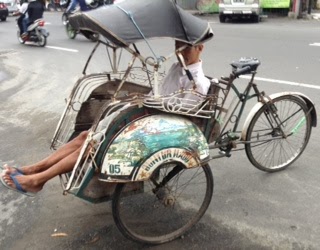 |
| A driver relaxes while waiting for his next customer. |
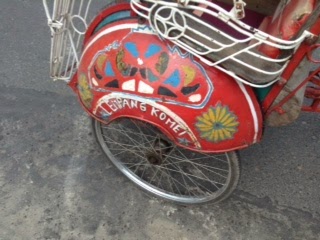 |
| This is a close up of the beca in the photo before. Many have bright colors or paintings, each one unique. |
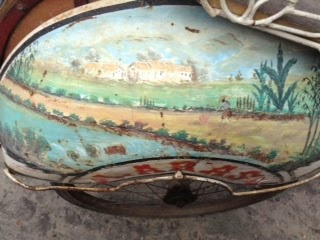 |
| A close up scene of a farmer, rice paddy, buildings and sky, painted on the hubcap of the wheel. |
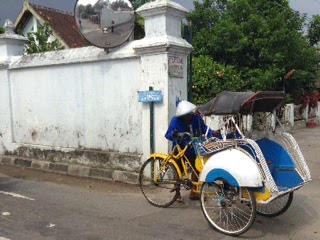 |
| Outside the sultan’s palace walls. |
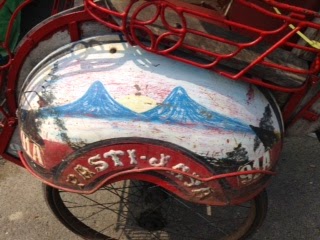 |
| This painting looks like Ometepe in Nicaragua with its 2 volcanoes next to each other. |
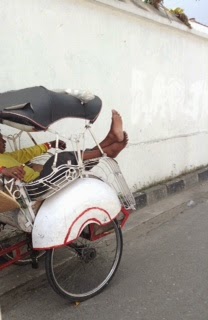 |
| The beca is also a portable siesta spot. |
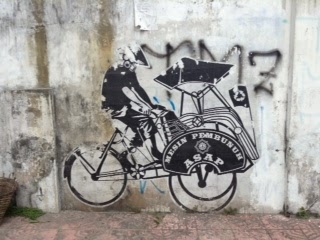 |
| Street art capturing both the beca and the face masks which are in high demand after the volcano spews its ashes as it did in February 2014. |
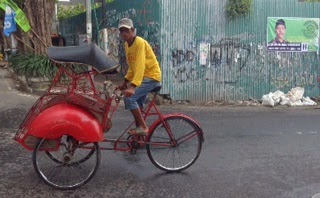 |
| The colors of the rides brighten the urban landscape. |
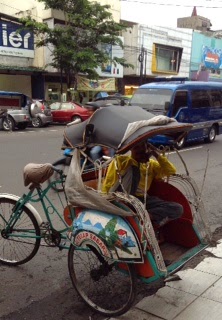 |
| Most becas have portable roofs for protection from sun and rain. |
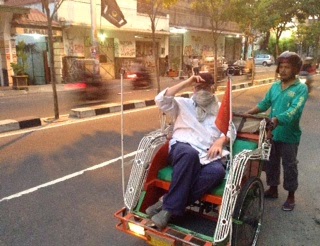 |
| Oops gotta go…. my rides waiting! |












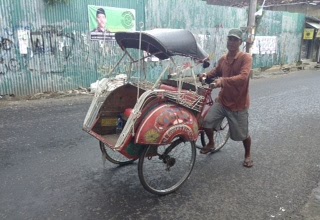
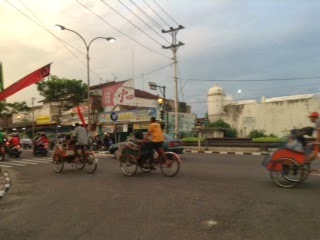
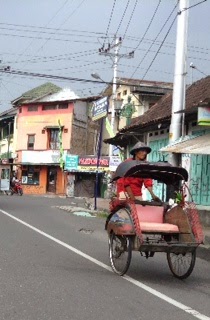
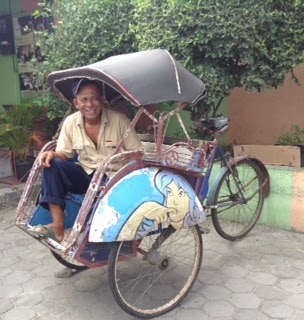
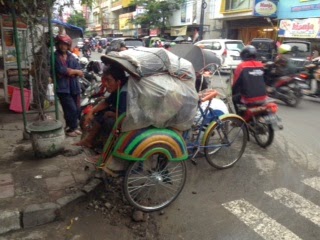
Love the painted becas! It’s interesting how vehicles are sometimes painted colourfully in many “third world” countries, for example India, Pakistan, and we saw some in Central America somewhere, but very rarely in first world countries (at least based on my experience).
Haiti had some very memorable small public vehicles. Great art. Panama used to be famous for its painted buses and then officials started to prohibit them.
There was an excellent article in NY Times which address the terminology of “first world” and “third world” and gives some better options. Here’s the link.
http://www.nytimes.com/2014/03/01/opinion/sunday/forget-developing-fat-nations-must-go-lean.html?_r=0